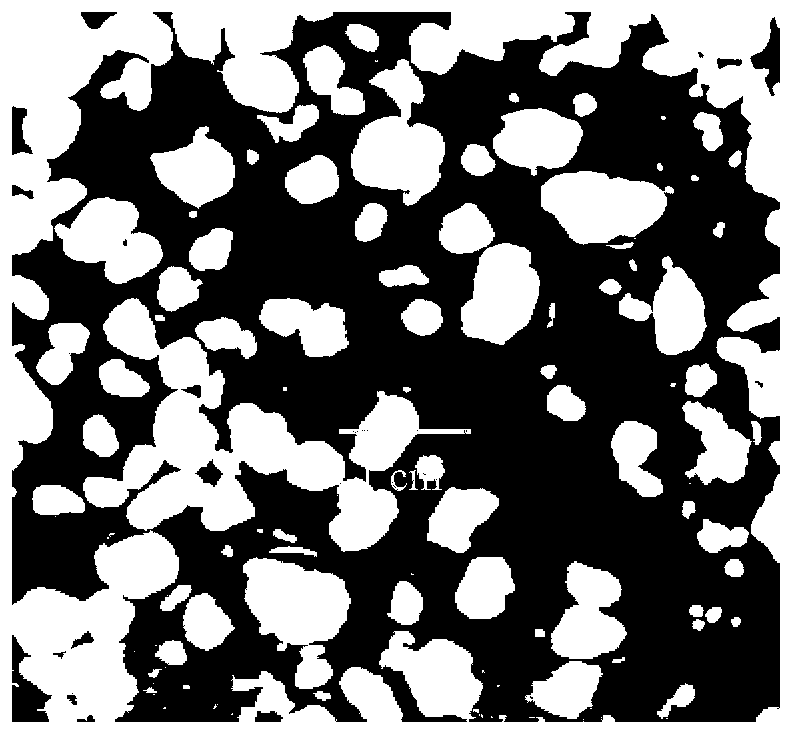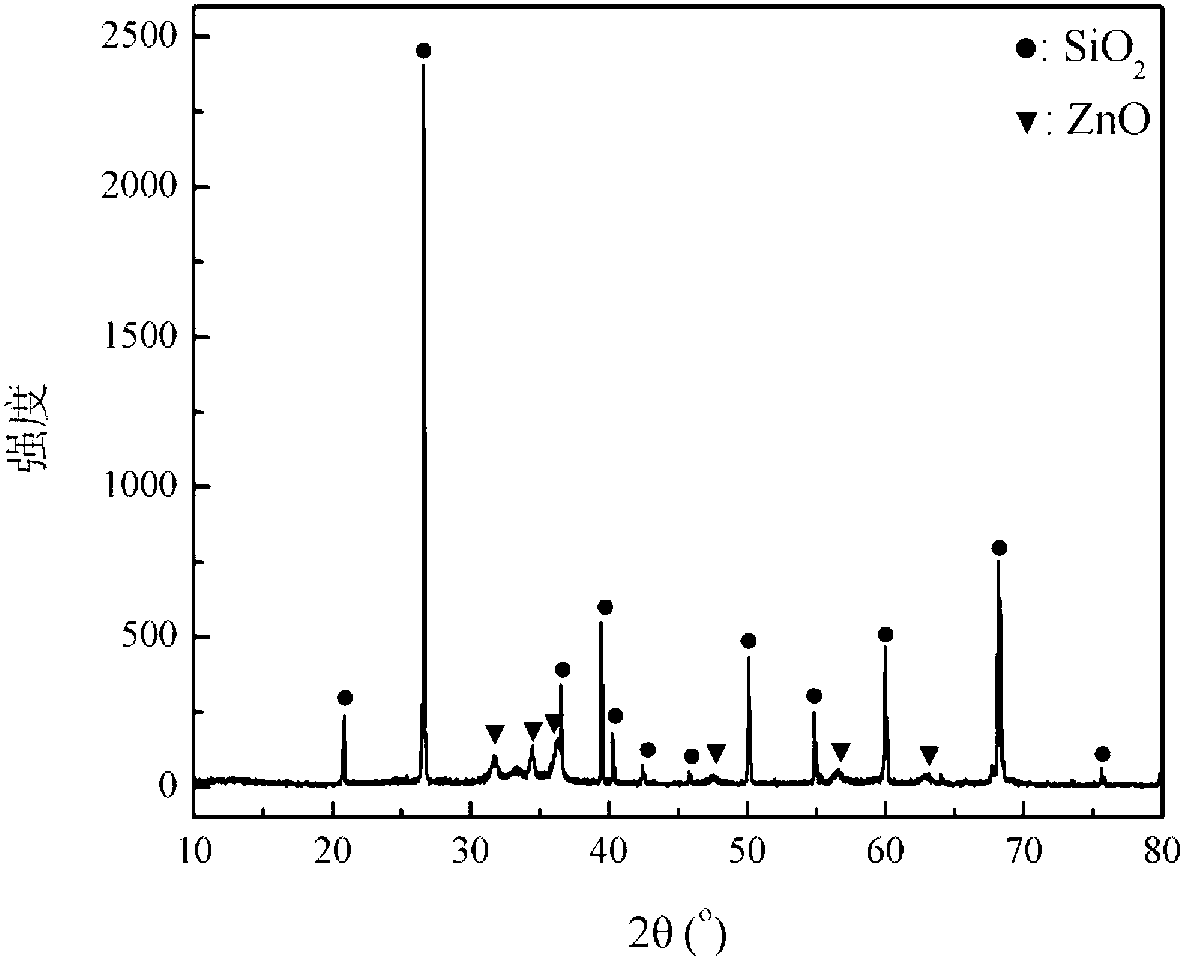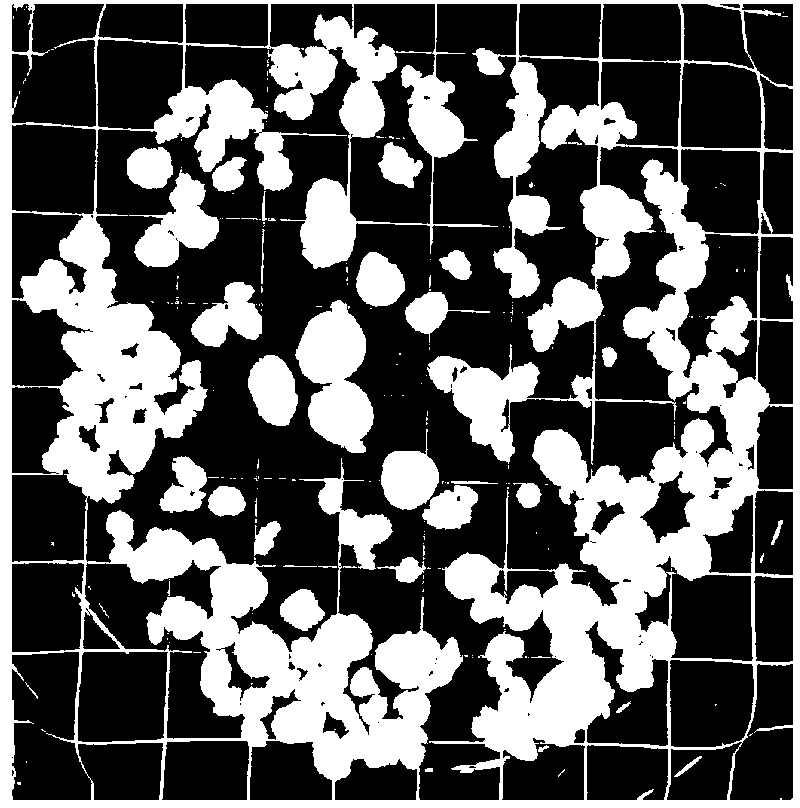Method for forming non-biological granular sludge in heavy metal waste water treatment process
A technology for treating granular sludge and wastewater, applied in the field of environmental engineering, can solve the problems of difficult solid-liquid separation of sludge, and achieve the effects of low reaction period, stable structure and good settling performance.
- Summary
- Abstract
- Description
- Claims
- Application Information
AI Technical Summary
Problems solved by technology
Method used
Image
Examples
Embodiment 1
[0022] The 500mL reaction beaker is placed on a constant temperature magnetic stirring device, the temperature is controlled at 40±1°C, and the stirring rate is adjusted to 400rpm. Add 100 mL of seed material micron-sized SiO to the reaction beaker 2 suspension with a solid concentration of 1.0 g / L. Then drop sodium hydroxide solution (0.015mol / L) and zinc-containing waste water (zinc ion concentration 600mg / L) respectively in the beaker simultaneously, control the drop rate rate of zinc-containing waste water to be 3mL / min, by adjusting sodium hydroxide solution The pH value of the reaction is controlled by the dropping rate of 9.0±0.2, and the reaction is 1h. Add a polyacrylamide (PAM) flocculant with a concentration of 0.1% dropwise to the suspended solution system after the above reaction, so that the reaction concentration is 12 mg / L. Then stir rapidly (500rpm) for 30s, and then stir slowly (50rpm) for 10min. Stand still for 30 minutes to stabilize and completely settl...
Embodiment 2
[0025] Place a 500mL reaction beaker on a constant temperature magnetic stirring device, control the temperature at 60±1°C, and adjust the rotational speed of the magnetic stirring bar to 300rpm. Add 200 mL of a suspension containing nano-ZnO seed crystal material into the reaction beaker, and its solid concentration is 0.5 g / L. Then drop sodium hydroxide solution (0.01mol / L) and zinc-containing waste water (zinc ion concentration 1000mg / L) respectively in the beaker simultaneously, control the dropping rate of zinc-containing waste water to be 2.5mL / min, by adjusting sodium hydroxide The dropping rate of the solution controls the reaction pH value to be 9.5±0.2, and reacts for 1 hour. Add a polyacrylamide (PAM) flocculant with a concentration of 0.1% to the suspension solution system after the above reaction, so that the reaction concentration is 10mg / L. Then stir rapidly (500rpm) for 30s, and then stir slowly (50rpm) for 15min. Stand still for 30 minutes to stabilize and c...
Embodiment 3
[0028] Place a 1000mL reaction beaker on a constant temperature magnetic stirring device, control the temperature at 25±1°C, and adjust the rotational speed of the magnetic stirring bar to 500rpm. Add 100 mL of a suspension containing seed crystal nano-ZnO to the reaction beaker, and its solid concentration is 1.5 g / L. Then drop sodium hydroxide solution (0.01mol / L) and simulated heavy metal wastewater (CZn(II) =500mg / L,C Cu(II) =100mg / L, C Pb(II) =100mg / L, C Cd(II) =100mg / L), control the dropping rate of heavy metal wastewater to 2.5mL / min, adjust the dropping rate of precipitant sodium hydroxide solution, control the reaction pH to 9.0±0.2, and react for 1h. Add a polyacrylamide (PAM) flocculant with a concentration of 0.1% to the suspension solution system after the above reaction, so that the reaction concentration is 10mg / L. Then stir rapidly (500rpm) for 30s, and then stir slowly (100rpm) for 15min. Stand still for 30 minutes to stabilize and completely settle the sl...
PUM
 Login to View More
Login to View More Abstract
Description
Claims
Application Information
 Login to View More
Login to View More - R&D
- Intellectual Property
- Life Sciences
- Materials
- Tech Scout
- Unparalleled Data Quality
- Higher Quality Content
- 60% Fewer Hallucinations
Browse by: Latest US Patents, China's latest patents, Technical Efficacy Thesaurus, Application Domain, Technology Topic, Popular Technical Reports.
© 2025 PatSnap. All rights reserved.Legal|Privacy policy|Modern Slavery Act Transparency Statement|Sitemap|About US| Contact US: help@patsnap.com



